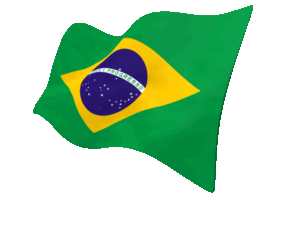Pennsylvania Genealogy Brick Wall Strategies
It’s a common Pennsylvania genealogy brick wall: “My ancestors are from PA—but I don’t know where!” Pennsylvania expert Jim Beidler has strategies that may help narrow down the needle-in-a-haystack problem of identifying your ancestor’s home county. Here, we also add...Brazil Immigration Cards Among New Finds At FamilySearch.org
 Nearly a million indexed records and images in the Brazil, Rio de Janeiro, Immigration Cards, 1900-1965, collection are among newly-posted data in FamilySearch’s ever-growing free digital archive. The cards were issued by Brazilian consulates around the world and presented upon arrival in Brazil by visitors and immigrants. They contain the immigrant’s name, where he or she came from, the date and place of birth, and the parents’ names.
Nearly a million indexed records and images in the Brazil, Rio de Janeiro, Immigration Cards, 1900-1965, collection are among newly-posted data in FamilySearch’s ever-growing free digital archive. The cards were issued by Brazilian consulates around the world and presented upon arrival in Brazil by visitors and immigrants. They contain the immigrant’s name, where he or she came from, the date and place of birth, and the parents’ names.
This is a pretty significant time period for Brazilian immigration. Brazil’s population was about 17.4 million in 1900–and it nearly doubled in the following two decades. By 1940, Brazil housed over 41 million people, and by 1960, over 70 million.
Most immigrants to Brazil since slavery was abolished in 1888 came from Italy, most significantly the areas of Vêneto, Campânia, Calabria, and Lombárdia. Germany and Japan sent their share of immigrants, too.
That’s not all that’s new on FamilySearch, though. Check out these other indexed and imaged records:
| Collection | Indexed Records | Digital Images | Comments |
|---|---|---|---|
| Brazil, Rio de Janeiro, Immigration Cards, 1900–1965 | 334,188 | 615,026 | Added indexed records and images to an existing collection. |
| Canada Census, 1911 | 1,227,603 | 0 | New indexed record collection. |
| Canada, Ontario, Toronto Trust Cemeteries, 1826–1989 | 96,228 | 0 | Added indexed records to an existing collection. |
| England, Cheshire Non-conformist Records, 1671–1900 | 14,673 | 0 | Added indexed records to an existing collection. |
| Hungary, Civil Registration, 1895–1980 | 0 | 40,475 | Added images to an existing collection. |
| Indonesia, Jawa Tengah, Kebumen, Naturalization Records, 1951–2013 | 0 | 14,330 | Added images to an existing collection. |
| Indonesia, Jawa Tengah, Wonogiri District Court Records, 1925–2013 | 0 | 137,465 | Added images to an existing collection. |
| Italy, Trieste, Trieste, Civil Registration (Tribunale), 1924–1939 | 0 | 97,505 | Added images to an existing collection. |
| U.S., Indiana, Marriages, 1811–1959 | 468,724 | 0 | Added indexed records to an existing collection. |
| U.S., Louisiana, New Orleans Passenger Lists, 1820–1945 | 51,232 | 0 | Added indexed records to an existing collection. |
| U.S., North Carolina, Wilmington and Morehead City Passenger and Crew Lists, 1908–1958 | 88,345 | 0 | Added indexed records to an existing collection. |
| United States Public Records Index | 132,330,416 | 0 | Added indexed records to an existing collection. |
FamilySearch Photos and Stories: 1 Million Images Uploaded
FamilySearch users have created one of the largest family photo albums in the world in record time: one million images in just under five months. That’s a lot of pictures upload, tagged, linked to relatives and now just waiting for us to go in and snag copies.
Why the massive response? Pick your favorite reason:
- uploading photos from your computer, smart phone or tablet is easy;
- If you post a photo, you can share a direct link through Facebook, Twitter, Google+, Pinterest or email;
- pictures are publicly available to anyone (with or without a FamilySearch account);
- you can caption pictures and tag subjects to link them to their profile in FamilySearch’s family tree;
- you can collaborate with other descendants to identify everyone in a group photo;
- the site promises free online storage of your digital images forever (“. Every photo is backed up with a redundant system and preserved in state-of-the-art archive facilities”).
If you have a tree at FamilySearch (which is free), you can easily click to see what pictures others have uploaded of your relatives. Just log in, click Photos, then Find Photos of your Ancestors.
FamilySearch offers these tips for sharing your photos on their site:
“If you don’t have a traditional scanner, you can use your cell phone. Just take a picture of your family photos, use the browser on your phone, and go to FamilySearch.org. Then click on Photos, and proceed from there.
If you know photos that exist of your ancestors but belong to other family members, contact these relatives and ask them to publish the photos to your family’s tree, or set a date to scan or take pictures of their collection. You can also send out a request for family photos over social media to your relatives. If there are family heirlooms (photos, furniture, bric-a-brac, letters, mementos, medals), take pictures of them and upload the photos to the profiles of your ancestors in the family tree. Then stories can be added by anyone to support the photos and describe them. These photos and stories will become keepsakes for everyone to have and will be preserved freely for future generations.”
Check out this 4-minute video on using Photos and Stories feature at FamilySearch, and you can contribute to the next million photos!
